-
Posts
36,980 -
Joined
-
Last visited
-
Days Won
5
Content Type
Events
Forums
Downloads
Quizzes
Gallery
Blogs
Everything posted by CharlieH
-
As retirement costs continue to rise in traditional American destinations like Florida, more and more Americans are looking abroad for a more affordable retirement experience. Thailand has become a top choice, offering a lower cost of living, excellent healthcare, and an easygoing lifestyle. With the support of specialized insurance options like Cigna Global, retiring in Thailand has become an increasingly attractive option for American retirees looking for both financial security and a fulfilling lifestyle. The Rising Costs of Florida Retirement Florida has long been known as America’s retirement capital, but in recent years, the cost of living in the Sunshine State has become prohibitive for many retirees. Housing prices have skyrocketed in desirable areas, and property taxes and insurance premiums have followed suit. Healthcare is another major financial strain for retirees. Even with Medicare, out-of-pocket medical expenses can add up, especially when it comes to prescription medications, specialized treatments, and long-term care options. Thailand: A Cost-Effective Option Thailand stands out as an affordable alternative to Florida, offering retirees a chance to live comfortably on a budget. Monthly expenses in Thailand typically range from US$1,000 to US$2,000, a fraction of what retirees would pay for a similar lifestyle in the U.S. Housing in Thailand is considerably more affordable, with a range of options in desirable locations. Whether you're looking for a beachside home, a mountain retreat, or a lively urban setting. Daily living expenses are also much lower in Thailand. Fresh produce, local markets, and public transportation are all more affordable, and dining out—an expensive luxury in the West—becomes an everyday pleasure in Thailand. Healthcare Excellence at a Fraction of the Cost Thailand's healthcare system is internationally recognised for its quality and affordability. Private hospitals in major cities like Bangkok and Chiang Mai offer state-of-the-art facilities and internationally trained physicians. These hospitals cater to expatriates and international patients, with English-speaking staff and familiar standards of care. Cost comparisons: Cardiac Surgery: Cardiac procedures in Thailand cost between US$15,000 and US$35,000. The same surgeries in the United States range dramatically higher, from US$70,000 to US$200,000. Fertility Treatments (IVF): Vitro fertilisation (IVF) is considerably more affordable in Thailand, with costs ranging from US$8,000 to US$13,700. This is notably less expensive than in Western countries, where similar treatments typically exceed US$20,000. Cancer Treatments: The cost of cancer treatment in Thailand varies depending on the specific type of cancer and required procedures, falling within the range of US$2,000 to US$130,900. In contrast, comparable cancer treatments in Western nations often surpass US$100,000. Diagnostic Imaging (MRI): Obtaining an MRI scan in Thailand averages around US$190. The average cost for the same procedure in the United States is approximately US$2,611. General Healthcare Services: Overall, medical care in Thailand is typically 50 to 75% more affordable than in countries like the United States or Australia. Medication Costs: Prescription medications in Thailand are often much cheaper than in Western countries. This is attributed to local manufacturing and government price controls. Visa Options Made Simple Thailand generally offers straightforward visa options for retirees, making relocation relatively easy compared to other countries. Retirement visas require a minimum bank deposit or pension income, but they grant a more flexible stay compared to other tourist options. For those seeking long-term residency, the Non-Immigrant O-X visa offers a ten-year stay. Health insurance is a mandatory requirement for these visas. Cigna Global's plans meet these visa requirements, offering retirees peace of mind as they navigate the relocation process. Expatriate Communities Concerns about isolation are common among those considering retirement abroad, but Thailand’s established expatriate communities offer a solution. Cities like Chiang Mai, Phuket, and Hua Hin, as well as parts of Bangkok, are home to thriving expat populations. Expat groups offer opportunities to connect with fellow retirees, share experiences, and find helpful resources. The strong sense of community in Thailand ensures that retirees never feel isolated. Cigna: Health Insurance Solutions for Retirees American retirees moving to Thailand must secure health insurance coverage, as Medicare typically does not cover international care. Fortunately, providers like Cigna Global offer specialised health insurance plans designed for expatriates in Thailand. Cigna offers: Hospital stays: Coverage up to US$1,000,000 annually for major health conditions Doctor visits: Up to US$25,000 per year for check-ups and specialist care Chronic illness care: Full coverage for long-term treatments Emergency evacuation: Global emergency assistance included Preventive care: Screenings, vaccinations, and routine check-ups to detect and manage health issues early Custom add-ons: Optional coverage for dental, vision, or maternity care Cigna simplifies the healthcare experience, ensuring that retirees can access the care they need without the burden of upfront payments. As more retirees discover the benefits of retiring in Thailand, the expatriate community continues to grow, offering additional resources and support for newcomers. With affordable living as a main allure, Thailand is an ideal destination for those looking to make the most of their retirement years. Sponsored - Original article by The Thaiger
-

IRS to Lose Billions in Revenue If Migrants Stop Filing Taxes
CharlieH replied to placeholder's topic in Political Soapbox
Post removed. A person's nationality is not relevant. STOP trolling ! -
Jukebox
-

American Man Found Dead in Apparent Suicide in Phuket Home
CharlieH replied to snoop1130's topic in Phuket News
Posted on behalf of @LivinginKata May MARTIN NEAL GREGORY rest in peace. I first met him when he arrived in Phuket some 25 years ago when he arrived in Phuket and rented a home from our company, and where he died. He was a quiet American, fit man who went to the gym every morning. Early to bed, no smoking or drinking, and no drugs AFAIK. No live-in lady or companion. A very good tenant, and my wife and I are shocked to hear about his demise. God Rest His Soul. -
Thonglor is not just a hotspot for brunches, bars, and late-night dancing—it’s also home to some of the best cannabis dispensaries in Bangkok. Whether you’re a seasoned enthusiast or new to the scene, Thonglor’s dispensaries offer a wide range of high-quality products in laid-back, stylish settings. Here’s a list of the top spots to explore for your next cannabis adventure in one of Bangkok’s most lively neighborhoods. 1. Stoned & Co Opening Hours: Sunday to Thursday: 10am to 2am, Friday to Saturday: 10am to 3am Location: Stoned & Co., 13, Seenspace Thonglor, 2nd Floor, 251/1 Thonglor, Khlong Tan Nuea, Watthana, Bangkok 10110 Contact: Facebook | Instagram | Line | Website Stoned & Co offers more than just cannabis; it feels more like a members-only lounge vibe that combines high-end strains with streetwear culture. Located on the second floor of Seenspace Thonglor, this dispensary is known for its exclusive products and sleek design. With a variety of flowers, CBD and THC products, and top-tier accessories, you can expect an elevated experience, whether you’re stopping by after a night out or looking to spend the day. Plus, the trendy merch is a must-see, making it perfect for a souvenir. 2. Four Twenty Opening Hours: Daily, 10am to 2am Location: Four Twenty Dispensary - Thonglor, Major Tower, Soi Thonglor 10, Khwaeng Khlong Tan Nuea, Khlong Toei, Bangkok 10110 Contact: Instagram | Facebook | Website As a fan favorite, Four Twenty stands out with its futuristic design and wide variety of cannabis products. This dispensary offers a selection of flowers, edibles, and accessories, with each jar displayed like a work of art. The staff is always ready to guide you through the options, making it an ideal stop for both novices and experienced users. The sci-fi-inspired interior adds to the cool vibe, making your visit feel like stepping into another world. 3. Trippy Nation Opening Hours: 24 Hours Location: Trippy Nation Dispensary - Thonglor, 999 Sukhumvit Rd, Khwaeng Khlong Tan Nuea, Watthana, Bangkok 1011 Contact: Instagram | Facebook Trippy Nation nails the essentials. With a mix of white furniture and pops of orange and purple, this dispensary feels just like home. The atmosphere is laid-back and welcoming, with an emphasis on great product selection and community. Their special local strain, Oklahoma Coma, is a must-try, and the in-house baked goods are legendary. The lounge area makes it a great place to relax and meet new people, often hosting fun events and sports nights. 4. Choo Choo Hemp Weed S Opening Hours: Daily, 10am to 1am Location: Choo Choo Hemp Weed Shop, 108/4-5 Sukhumvit 49 Watthana district, Khlong Tan Nuea, sub district, Bangkok 10110 Contact: Instagram | Facebook | Website Choo Choo Hemp Weed Shop feels personal and authentic, thanks to its grower-owned ethos. With over a hundred strains to choose from, you’ll find everything from indoor exotics to local favorites. The space is earthy and warm, creating an inviting atmosphere for browsing and relaxing. As a plus, the knowledgeable staff makes shopping here easy, ensuring you feel informed and confident with your purchase. Don’t forget to try their edibles, drinks, and other accessories. 5. Bang Flora Dispensary Opening Hours: Daily, 1pm to 3am Location: Bang Flora Dispensary, 113, 3 Soi Thong Lo 10, Khlong Tan Nuea, Watthana, Bangkok 10110 Contact: Instagram | LINE | Website Bang Flora is a newer addition to the Thonglor scene, but it’s already making waves. With a background rooted in Humboldt, California, their team knows cannabis inside and out. They grow their products locally using sustainable methods, offering flowers, edibles, and concentrates. The dispensary’s clean, providing a calm space to browse, and the friendly staff adds to the overall welcoming vibe. This summer, they’ll launch Bangkok’s first true cannabis-friendly rooftop bar—definitely something to look forward to. 6. Medlab Dispensary Opening Hours: Monday to Saturday, 3pm to 2am Location: Medlab Dispensary, 53 Waterford Pk Aly, Khlong Tan Nuea, Watthana, Bangkok 10110 Contact: +66 96 731 0850 Medlab Dispensary is hard to miss with its bold red exterior, and the inside doesn’t disappoint. The display is simple yet elegant, with flowers showcased like tiny masterpieces. The staff at Medlab are approachable and never rush you, ensuring a pleasant shopping experience. If you’re in the mood for something sweet, their infused cookies are a must-try—soft, buttery, and absolutely delicious. 7. Bong Party x Bangkok Exotics Opening Hours: Daily, 10am to 2am Location: Bong Party x Bangkok Exotics, Ramen Tenyo, 2nd Floor 56/8 Thonglor, Khlong Tan Nuea, Watthana, Bangkok 10110 Contact: Facebook If you’re not expecting a cannabis shop above a ramen joint, you’ll be pleasantly surprised. Bong Party x Bangkok Exotics offers a stylish environment filled with high-quality cannabis products. With colorful jars of flowers, unique bongs, and a selection of accessories, this place is the definition of charming. The staff is attentive and friendly, ready to guide you through their premium offerings. It’s a relaxed spot to enjoy the vibe and discover new products. 8. Marley's Bar and Café Opening Hours: Daily, 12pm to 3am Location Marley's Bar and Café, 440 6 Thonglor, Khlong Tan Nuea, Watthana, Bangkok 10110, Thailand Contact: Instagram | Facebook Marley’s Bar and Café offers a fun, playful atmosphere with everything you need for a memorable experience. With five floors packed with activities—from pool tables to PS5 gaming and vintage arcade machines—it’s a space that never runs out of things to do. But the real highlight is the quality cannabis they offer, displayed beautifully and well cared for. The staff is knowledgeable and friendly, ensuring you have a five-star experience every time. 9. Green Lab Thonglor Opening Hours: Monday, 12pm to 12am; Tuesday to Friday, 10am to 12am; Saturday and Sunday, 10am to 10pm Location: Green Lab Thonglor, 63 Room A5, Civic Park Building, Subdistrict, 13 Thonglor, Khlong Tan Nuea, Watthana, Bangkok 10110 Contact: Instagram | Facebook | Website Green Lab Thonglor is a medical cannabis expert that has quickly raised the bar for the cannabis scene in Bangkok. Their premium flower, edibles, and accessories are all hand-selected, and the staff’s approach is refreshingly humble and helpful. Green Lab makes it easy to access quality cannabis products, with convenient parking and express delivery options to make your experience even smoother. 10. Eden Dispensary & Cafe Opening Hours: Monday to Friday, 10am to 8pm; Saturday and Sunday, 12pm to 8pm Location: Eden Dispensary & Cafe - Thonglor, 106, 1 Sukhumvit 49, Khlong Tan Nuea, Watthana, Bangkok 10110 Contact: +66 83 530 9239 Eden Dispensary & Café is the perfect spot for those who want to unwind in a relaxed, comfortable space. With a cozy, pet-friendly garden and knowledgeable staff, you’ll feel right at home. Their selection of exclusive cannabis strains guarantees a high-quality experience, and the café offers drinks infused with CBD oil for a refreshing twist. Thonglor’s cannabis scene is diverse and always welcoming. Whether you’re looking for high-quality strains, friendly service, or a community vibe, these dispensaries offer something for everyone. Sponsored – Original article by The Thaiger tic s
-
Families today think differently when it comes to finding the right place to live. The decision is no longer based only on house size or scenic views. Families now care more about safety, good schools, strong communities, and healthy lifestyles. A home is the foundation for everyday life. It shapes childhood memories, school routines, and lifelong relationships. The best homes are those where children grow up feeling secure, supported, and happy. More than a holiday destination Phuket has transformed into a year-round family destination, offering both modern conveniences and natural beauty. The island now boasts international schools, healthcare facilities, wellness centres, shopping hubs, and recreational spaces—all within easy reach. In particular, areas like Bang Tao, Cherngtalay, and Bang Jo are becoming top choices for families seeking quiet, green environments near the beach, along with excellent infrastructure and services. The short travel times to everything families need make it a prime location for everyday living. Education as a top priority For many parents, the biggest reason to move is to give children a better education. Being close to a good school makes daily life easier — shorter drives, better routines, and more time at home. HeadStart International School, located in Cherngtalay, is a leading international school on the island. HeadStart offers the British curriculum from preschool to Year 13 with a strong focus on academic results and student well-being. It’s one of Phuket’s most respected schools, and because of high demand, waiting lists are common. A growing community The neighborhood around HeadStart is filled with like-minded families who value education, safety, and a balanced lifestyle. Many are professionals or business owners, and many have relocated from abroad in search of a secure, community-driven environment. Living close to the school means easy access to cafes, shops, parks, and clinics, helping parents build a local support network while children can form lasting friendships. Homes in the heart of Bang Tao Manor Phuket Located just a 6-minute drive from HeadStart, Manor Phuket is a private villa development designed with families in mind. This peaceful community offers something truly special—exclusive priority access to HeadStart International School with no waiting list. Manor Phuket is a rare opportunity in Phuket, offering peace of mind for families looking to simplify school enrolment. The development will feature 100 villas spread across 30,000 square metres, ensuring privacy and space. Each villa boasts a private garden, modern architecture, and open living areas—ideal for family life. Additionally, Manor Phuket provides a dedicated school bus service to HeadStart, ensuring safe, convenient school runs. The community also includes lifestyle amenities such as a gym, spa, restaurant, co-working spaces, and playgrounds—everything a family needs to live comfortably and conveniently. Clover Residence: A proven success near the school Just 200 metres from HeadStart, Clover Residence offers 76 family-focused villas with private pools and tropical gardens. Designed with modern interiors and an open-plan layout, these homes are perfect for young families. Clover Residence has built a solid reputation as one of the top villa projects in the area, with most homes already sold out due to high demand. Its proximity to HeadStart, shops, and recreational facilities makes Clover Residence a top choice for families who want convenience and quality in their living space. A smart investment in your family’s future Bang Tao is quickly becoming the first area in Phuket to offer all the essential infrastructure needed for family life, all in one place. This includes international schools like HeadStart, modern shopping malls, quality medical clinics, a local immigration office, and recreational parks for children and adults alike. The area is designed to support everyday life while offering plenty of opportunities for recreation, wellness, and outdoor activities. Families can easily manage school runs, work, and daily errands without long drives, making it an ideal place for both living and investing. With a growing international community, this part of Phuket is now one of the smartest places to invest in both lifestyle and property. Choosing the right home is not only about the house itself. It’s also about the life that happens outside— school days, family dinners, weekend walks, and milestones shared. In this corner of Phuket, families can find homes that support every part of that journey. Sponsored - Original article by The Thaiger
-
Key Developments: UN Chief António Guterres condemns Gaza blockade, calling it a "killing field" and urging global action. Aid Crisis Deepens: 25,000 aid trucks blocked, leaving hospitals overwhelmed and bakeries shut down. Death Toll Climbs: 1,449 Palestinians killed since March 18; 58 more in the last 24 hours. Israel Defends Actions: Claims no aid shortage, accusing UN of "spreading slander." UN Agencies Warn of Famine: Health systems on the brink, with food and medical supplies critically low. Core Analysis: The humanitarian crisis in Gaza has reached a breaking point as Israel’s blockade enters its second month. UN Secretary-General António Guterres described the situation as a “killing field,” stating that civilians are trapped in an “endless death loop.” He accused Israel of violating international law by failing to ensure the delivery of food and medical supplies to Gaza’s 2.3 million residents. Israel’s foreign ministry rejected these claims, asserting that “over 25,000 aid trucks entered Gaza during the ceasefire.” Spokesman Oren Marmorstein accused Guterres of ignoring facts and spreading “slander against Israel.” However, UN agencies report that aid deliveries have halted since the blockade resumed on March 2, leaving markets empty and hospitals rationing critical supplies like antibiotics and painkillers. The blockade has exacerbated Gaza’s already dire conditions. According to a joint statement from six UN agencies, “all UN-supported bakeries have closed,” and fresh vegetables are scarce. The World Food Programme revealed that food prices have skyrocketed, with wheat flour costs increasing by over 450%. Hospitals are overwhelmed, forcing doctors to prioritize patients with the best survival chances while others die waiting for care. The renewed conflict has also taken a devastating toll on civilians. Israeli airstrikes killed 58 Palestinians in the last 24 hours alone, including five children in Deir al-Balah. Since March 18, 1,449 Palestinians have died in Israeli attacks, according to Gaza’s health ministry. Israel insists its military targets Hamas militants and denies deliberately attacking civilians. Guterres’ remarks follow a January ceasefire that briefly allowed aid into Gaza and facilitated the release of 33 hostages by Hamas in exchange for nearly 1,900 Palestinian prisoners held by Israel. However, hostilities resumed after Hamas accused Israel of failing to honor its commitments under the truce. Why It Matters: The Gaza blockade is creating conditions that could lead to famine and widespread disease, violating international humanitarian law. With hospitals collapsing and food supplies dwindling, the crisis is becoming a test of global resolve to uphold basic human rights. The UN’s call for urgent action underscores fears that Gaza’s suffering could escalate into one of the worst humanitarian disasters in modern history. Based on an article by BBC 10.04.2025
-
Q2 of 2025 begins under the shadow of sharp rotations in capital, increased political risk, and growing market segmentation. While US equities and cryptocurrencies struggled in Q1, European stocks, gold, and the yen emerged as havens. Traders now face an increasingly complex global environment marked by softening US growth, surging European confidence, and persistent uncertainty over monetary policy direction. Exness’ Michael Stark, Financial Content Leader, Stanislav Bernukhov, Senior Trading Content Specialist, and Antreas Themistokleous, Trading Content Strategist, have provided a financial analysis for Q2, 2025. Q1 recap: A period of strategic rotation Q1 was characterised by aggressive deleveraging in the US and crypto markets, triggered, in part, by President Donald Trump’s surprise imposition of tariffs on Canada, Mexico, the EU, and China. Capital flowed from US equities into overseas assets, notably Europe and Asia. The NASDAQ and S&P 500 declined sharply, affected not only by policy volatility but also by sector-specific developments like NVDA’s drop following the launch of a Chinese AI engine. The tech-heavy NASDAQ is now showing signs of pessimistic breadth and low volume, indicators of a market adrift. Yet, the pain in the US has been a gain for others: Germany’s DAX hit an all-time high in March, and Hong Kong’s Hang Seng has been in a solid uptrend since January. The rise of ‘strong Europe’ Europe is seeing a significant narrative shift. Yields on Germany’s 30-year bunds spiked amid rising military expenditure discussions, driving capital into the euro. Once lagging behind the greenback, the euro is rallying, with futures’ open interest increasing in tandem. The phrase Make Europe Great Again may have started as political satire, but it now resonates across bond and FX markets. In early March, the euro-dollar pair recorded its strongest weekly performance in nearly two decades, reinforcing the sense of revival. Japan and the yen: A haven with yield appeal Japan is also seeing a shift in expectations. Inflation reached 4% in January, well above the Bank of Japan’s target. Though the government reintroduced energy subsidies, rates are still expected to rise by September. Long-term bond yields over 2.5% are making the yen attractive again, both as a haven and a potential higher-yielding currency. US macro: Resilient yet wobbly Despite some resilience, the US economy shows signs of fatigue. Unemployment ticked slightly higher, and the Conference Board’s Leading Economic Index fell for a third consecutive month. While GDP remains strong, forward-looking indicators like new orders and consumer confidence are weakening. The Fed held rates steady in March, but expectations for a rate cut in June remain high. According to CME FedWatch, over half of market participants anticipate a cut by mid-year. Crypto markets: Disappointment despite hope Expectations for a crypto president did little to support bitcoin or ether. Both assets saw sharp Q1 declines, with ether losing 40% and bitcoin dipping to US$78,000 before rebounding slightly. Still, on-chain data paints a different picture. Bitcoin balances on exchanges dropped from 2.79 million in January to 2.67 million by mid-March, suggesting accumulation by long-term holders. Meanwhile, the hash rate increased by 3%, a sign of sustained miner confidence despite lower prices. By March, the Fear and Greed Index plunged from 66 (greed) to 20 (extreme fear) but has since recovered slightly. A shift in Fed policy could be the catalyst crypto bulls are waiting for. Gold: The winner of Q1 Gold surged toward and briefly broke US$3,000 per ounce, making it the standout performer of Q1. Political and trade tensions, paired with dovish central banks, have driven haven demand. With the Fed reviving its use of transitory to describe inflation, and global inflation remaining largely under control, gold remains attractive. Technically, US$3,140 is a mid-term target, though a consolidation below US$3,000 is possible before further gains. Oil: Supply gains vs. demand doubts Oil’s price has remained range-bound, stuck in a descending channel since mid-January. Despite a slight increase in global supply, thanks to projects in Kazakhstan and increased output from the US and Saudi Arabia, demand concerns linger. The IEA projects modest demand growth of just over 1 million barrels per day, largely from China and India. Technicals suggest oil may test resistance around US$70, with support around US$65 if the downtrend resumes. Stock markets: Fragmentation rules US equities remain under pressure. The S&P 500 and NASDAQ are trading below key moving averages, while European and Asian indices thrive. Investor fear persists, with CNN’s Fear and Greed Index showing weak breadth and price strength. Still, certain US stocks show promise: Gilead Sciences (GILD) is in a solid uptrend, supported by strong earnings guidance and HIV drug sales. The stock is nearing dynamic support and could see renewed upside. JPMorgan (JPM) continues to benefit from market volatility. With a 50% YoY rise in Q4 net income, the bank could bounce from its 200-day MA. CME Group (CME) may gain from increasing demand for derivatives amid volatility. While long-term targets suggest limited upside, short-term momentum is strong. Forex: Traders eye central bank divergence Q1 saw an unusually active forex landscape. The euro surged, the yen strengthened, and the dollar wobbled amid tariff chaos and mixed economic signals. The Bank of Japan remains the most uncertain major central bank, with inflation missing forecasts in March and a hike expected only in September. EURUSD The pair broke higher in March on capital rotation and military spending narratives. US$1.10 is a key resistance, and depending on bond yields and central bank signals, any retracement might find support at US$1.08 or US$1.07. USDJPY As rate differentials narrow and haven flows rise, the dollar-yen pair looks set to remain under pressure. ¥146.50 is a key support level, with ¥144 being the next line of defense if the pair continues downward. Key Themes for Q2 Capital rotation away from the US: Uncertainty and trade policies are pushing global capital toward Europe and Asia. Low volatility and drying liquidity: Despite declines, markets aren’t highly volatile. This often indicates indecision and exhaustion, not capitulation. Havens dominate: Gold and the yen continue to attract inflows, while speculative risk assets face a tough environment. For more detailed views of the markets, visit Exness Insights. Sponsored - Original article by The Thaiger
-

Advertorial HappyLyfe: Simple, Sustainable, and Organic
CharlieH posted a topic in The Wellness Zone
In today’s world, more consumers are seeking products that are not only better for their health but also for the planet. HappyLyfe is here to meet that demand, offering a platform that connects you directly with local farmers, producers, and manufacturers of clean, organic, and eco-friendly products. Whether it’s food and beverages, household items, or personal care, HappyLyfe is dedicated to providing sustainable living solutions that are both affordable and accessible. Born from a Personal Journey HappyLyfe’s story begins with a simple but powerful mission: to make clean, natural products easier to find. It all started when the founders, motivated by a desire for healthier products for themselves and their pets, struggled to find transparency in the market. The lack of clarity around where products came from and how they were made led to the creation of HappyLyfe – a marketplace dedicated to bringing you trusted, locally sourced, sustainable goods. HappyLyfe stands by the support local initiative, promoting homegrown, eco-friendly products that help reduce environmental impact and support local communities. Making Organic Products Affordable Organic living doesn’t have to come with a hefty price tag. Many people associate organic with expensive, but HappyLyfe has redefined that. By sourcing directly from local farmers and producers, HappyLyfe removes unnecessary middlemen, keeping prices competitive while maintaining the quality and integrity of their products. HappyLyfe’s carefully vetted products come with certifications that guarantee their authenticity and eco-friendliness, so customers can shop with confidence. From organic milk and free-range eggs to high-quality CBD products, HappyLyfe is committed to offering organic products at accessible prices. As more people adopt sustainable lifestyles, HappyLyfe remains at the forefront of this movement. The brand strives to make eco-conscious living accessible to everyone by offering a wide variety of products, from organic and sugar-free foods to eco-friendly skincare and cleaning products. By staying digital, HappyLyfe reduces overhead costs and passes the savings onto customers, making it possible to live a healthier, more sustainable life without breaking the bank. A Simple, Transparent Sourcing Process At HappyLyfe, each product is carefully audited before being listed on the platform. The process begins with a review of certifications, farming methods, and product origins to ensure that they meet the brand's high standards for sustainability and transparency. Whether it’s organic produce or cruelty-free skincare, customers can trust that every product on the platform has been thoroughly vetted. The HappyLyfe platform not only displays product certifications but also tells the stories behind the products and the people who make them. Products That Customers Love HappyLyfe’s selection has something for everyone. Some of their top-selling items include organic, grass-fed milk, free-range meats like chicken and duck, and seasonal produce such as fresh figs. CBD products are also a customer favorite, with products like CBD oils nd massage balms flying off the shelves. It’s just one example of the high-quality wellness products available on the site, all made with the same commitment to sustainability and ethical practices. HappyLyfe is also committed to creating a community committed to making a positive impact. Through initiatives like the Donation Wallet, customers can earn points with every purchase and donate them to causes like animal rescue and children’s shelters. This program is a testament to HappyLyfe’s belief in social good and its role in building a more sustainable, conscious society. Why Choose HappyLyfe? For those seeking a healthier, more sustainable lifestyle, HappyLyfe is your one-stop destination for all things organic and eco-friendly. With a user-friendly platform and personalised shopping experience, HappyLyfe makes it easy to make informed choices that align with your values. With a growing selection of products, from organic foods to cruelty-free skincare, and the convenience of the HappyLyfe app, there’s no better way to start living sustainably. Ready to make a difference? Join the movement toward a healthier, more sustainable future. In collaboration with HappyLyfe Original article by The Thaiger -
Israel’s Position "No Ceasefire Without Hamas’ Defeat": Prime Minister Benjamin Netanyahu insists military operations will continue until Hamas is militarily dismantled, arguing that a full withdrawal from Gaza would allow the group to rearm and regroup13. Hostages as Leverage: Israel demands the release of all remaining hostages (24 believed alive) before considering a permanent truce, rejecting Hamas’ precondition to end the war first15. Security Control: Plans to seize Rafah and establish a “Morag corridor” aim to sever Gaza from Egypt, claiming this is necessary to prevent future attacks[original article]3. Domestic Pressure: Far-right coalition partners threaten to collapse Netanyahu’s government if he agrees to a deal that leaves Hamas in power, advocating for Gaza’s reoccupation and Palestinian emigration13. Hamas’ Demands Permanent Ceasefire First: Hamas refuses to release hostages unless Israel commits to a full withdrawal from Gaza and a permanent end to hostilities15. Reconstruction and Governance: Seeks guarantees for Gaza’s reconstruction and retention of political influence, fearing Israel will resume attacks after hostage releases34. Humanitarian Crisis: Points to 47,000+ Palestinian deaths and 400,000 displaced since October 2023 as justification for urgent international intervention45. Distrust of Israel: Rejects phased agreements, arguing Israel could exploit negotiations to impose new demands (e.g., exile of Hamas leaders) after initial concessions23. Sticking Points Phase Two Ambiguity: Hamas fears Israel will resume fighting after the first hostage exchange, while Israel refuses to commit to a full withdrawal without disarmament guarantees15. US-Israel Coordination: Netanyahu’s alignment with Trump’s proposal for forced Palestinian displacement undermines ceasefire talks, drawing global condemnation45. Regional Dynamics: Hamas’ depleted military capabilities and Israel’s domestic instability amplify mutual distrust, reducing prospects for compromise35. Key Quote from Antony Blinken: “One party continually changes demands, insisting on alterations for matters already agreed upon”1. Why It Matters: The deadlock perpetuates a cycle where 2.3 million Gazans face permanent displacement, atrocities escalate, and the specter of ethnic cleansing looms under Trump-backed proposals
-
Key Developments: 23 civilians killed in an Israeli airstrike targeting a residential building in Gaza City. IDF plans to seize Rafah, cutting Gaza off from Egypt with a "security corridor." 1,500 killed, 3,700 injured since ceasefire collapse; UN reports 400,000 displaced. Hamas rockets injure 12 in Ashkelon amid intensified hostilities. Netanyahu rejects mediation, vows to defeat Hamas before halting military operations. Core Analysis: The deadliest revelation from Wednesday’s airstrike on Gaza City was the killing of at least eight women and children in a four-story residential building in Shijaiyah. Medics at al-Ahli hospital confirmed the toll, with rescue workers still searching for survivors amid the rubble. The Israeli military claimed the strike targeted a senior Hamas militant but offered no evidence to support this assertion. Meanwhile, reports from Haaretz reveal that the Israel Defense Forces (IDF) are preparing to seize Rafah, a city constituting one-fifth of Gaza’s territory, as part of its newly proposed “Morag corridor.” This corridor would sever Gaza’s connection to Egypt entirely, creating an enclave surrounded by Israeli forces. A senior UN official warned that such actions could lead to “permanent displacement” for Gaza’s 2.3 million residents, exacerbating the humanitarian crisis. The ceasefire collapse on March 2 marked a turning point, with Israel resuming large-scale bombing and cutting off essential supplies like food and fuel. Since then, 1,500 Palestinians have been killed, most of them civilians, according to Gaza’s health ministry. In retaliation, Hamas launched its strongest rocket attack yet on Ashkelon earlier this week, injuring 12 Israelis. Prime Minister Benjamin Netanyahu has doubled down on military operations, stating his intent to “divide up” and seize large swathes of Palestinian territory. He rejected international mediation efforts aimed at securing another ceasefire and freeing hostages held by Hamas. “We will not stop fighting until Hamas is defeated,” Netanyahu declared during his visit to Washington. Hamas remains defiant, demanding an end to the war before releasing its remaining hostages. Of the original 59 captives, only 24 are believed to be alive, according to mediators attempting to negotiate their release. Why It Matters: The escalation in Gaza represents a critical juncture in the ongoing conflict, with potential violations of international law, including the Geneva Conventions. The proposed seizure of Rafah could permanently alter Gaza’s geopolitical landscape and deepen humanitarian suffering for millions. Furthermore, Israel’s alignment with Trump’s controversial call for forced population transfers risks alienating allies and destabilizing the broader Middle East. Based on reports from various media sources.
-
Donald Trump urged the world to "be cool" as his sweeping import taxes took effect, causing global markets to plummet. In a dramatic twist, moments after the New York Stock Exchange opened, he proclaimed, “THIS IS A GREAT TIME TO BUY!!!” Hours later, Trump changed course again, announcing a 90-day pause on tariffs for most nations while hiking them on Chinese goods to 125%. This unexpected move sent markets soaring, with White House officials claiming it was "the art of the deal" in action all along. Social media lit up with accusations of Trump orchestrating a reverse "pump and dump" scheme, allegedly manipulating stock prices for gain. Democratic Senator Adam Schiff has called for an investigation into possible insider trading, arguing that the public deserves answers. Caught in the crossfire, the administration’s trade representative was blindsided during a House committee hearing, unable to account for the abrupt tariff reversal. Tensions flared as Democratic Rep. Steven Horsford grilled the representative, questioning the administration's strategy and integrity. "If you knew these tariffs would be turned off, why not mention it in your testimony?" Horsford demanded," The trade rep struggled to justify the lack of communication, fuelling speculation of market manipulation. Public outcry intensified as people questioned who might benefit from such volatile policies. Schiff warned of the dangerous potential for insider trading within the administration, demanding transparency about who knew what and when. Meanwhile, Trump appeared unfazed, celebrating with car racing champions outside the White House. When asked about his decision to pause tariffs, he downplayed concerns, insisting that people were simply overreacting. "They were getting a bit yippy, a bit afraid," Trump stated casually, suggesting his strategy was unfolding quicker than anticipated. On social media, the Trump campaign ridiculed sceptics, questioning whether “the Panics” heeded Trump’s buying advice. The playful tone, however, did little to quell fears of deeper underlying issues. Senator Schiff is adamant about uncovering any wrongdoing, vowing to hold the administration accountable. He stresses the need for transparency, asking who might be cashing in on the market’s wild ride. The situation leaves many questioning the stability of the U.S. economy under such unpredictable leadership. With calls for investigation growing louder, the unfolding drama seems far from over. In a final note, Horsford criticised the seeming lack of control within the administration, urging greater scrutiny and oversight. As questions linger, the American public remains on edge, wary of what might come next in Trump’s tariff saga. Based on a report from The Independent. 10.04.2025
-
President Donald Trump’s sweeping tariffs targeting Southeast Asia have delivered a significant blow to Vietnam’s economic ambitions and the region’s export-driven growth model. With tariffs as high as 46% on Vietnamese goods, the punitive measures threaten to derail decades of economic progress. Impact on Southeast Asia Tariff Rates: Vietnam faces a 46% tariff, Cambodia 49%, and Thailand 36%. Other nations like Indonesia (32%) and Malaysia (24%) are also affected, with smaller rates for the Philippines (17%) and Singapore (10%). Economic Dependency: Exports to the U.S. contribute around 30% of Vietnam’s GDP and 25% of Cambodia’s, making these measures particularly damaging. Vietnam’s Challenges Under Communist Party Secretary-General To Lam, Vietnam has pursued an ambitious plan to transition to a knowledge-based economy by 2045, aiming for annual growth rates above 8%. However, these tariffs threaten that vision. Bamboo Diplomacy Tested: Vietnam’s strategy of balancing ties with both the U.S. and China is under strain. Legitimacy at Risk: The Communist Party’s economic promises, already seen as overly ambitious, face further scrutiny. Regional Fallout Cambodia: The garment sector, employing 750,000 people, is at risk of losing thousands of jobs, exacerbating political instability under Prime Minister Hun Manet. Thailand: Although U.S. exports account for less than 10% of its GDP, Thailand’s struggling economy is ill-prepared for another setback. Government Responses Southeast Asian leaders are adopting a cautious approach: Vietnam: Deputy Prime Minister Ho Duc Phoc has offered to eliminate tariffs on U.S. goods in exchange for relief. Thailand and Malaysia: Both nations are sending delegations to Washington to negotiate reduced tariffs and increased American imports. U.S. Stance The Trump administration remains firm, with trade advisor Peter Navarro dismissing Vietnam’s concessions as insufficient. Navarro accuses Vietnam of maintaining non-tariff barriers and re-exporting Chinese goods to evade U.S. duties—a claim trade studies dispute but acknowledge at lower levels (7%-16%). Outlook The tariffs pose significant risks to Southeast Asia’s economic stability and political cohesion. For Vietnam, diversifying export markets and negotiating trade agreements may offer some relief but will take time to offset the immediate impact. -- 2025-04-09
-
Recent stock market turbulence has triggered widespread concern among Americans about their retirement savings, with many reconsidering their long-term financial plans. As the S&P 500 slides and volatility surges, anxiety is mounting among workers and retirees alike, particularly those heavily invested in 401(k) accounts tied to equities. Key Developments Market Impact: U.S. stocks have tumbled amid fears of prolonged trade tensions and economic uncertainty, with volatility indexes hitting multi-month highs. Retirement Exposure: Roughly 60% of Americans hold stock market investments, often through 401(k) plans, which are popular tax-advantaged retirement accounts. Surge in Concerns: Financial services firm TIAA reports a 30% spike in calls and online account activity since President Trump announced sweeping tariffs, reflecting heightened investor unease. Voices from the Ground Carl Young, 52 (Florida): The semi-retired energy executive describes the downturn as “self-inflicted” and worries about its impact on his nest egg. “It feels like we’re shooting ourselves in the foot,” he says. Catherine Foster, 59 (Florida): Her 401(k) has lost $10,000 from its peak, forcing her to reconsider retiring at 60. “If something catastrophic happens to my house, I don’t know how I’d afford repairs,” she admits. Barry Brown, 63 (South Carolina): While concerned, he supports Trump’s tariffs and plans to work until 65, citing faith and long-term optimism. Expert Guidance Financial advisors urge clients to avoid knee-jerk reactions. Evan Potash (TIAA): “Selling locks in losses. We prepare for volatility—this is normal market behavior.” Long-Term Focus: Historical data shows markets typically rebound, but retirees are advised to reassess risk exposure and diversify holdings. Broader Implications Trade War Risks: Trump defends tariffs as necessary to rebalance trade, but economists warn of prolonged market instability and potential recession. 401(k) Reliance: With 35% of workers contributing to these accounts, market swings directly impact retirement readiness, especially for older Americans. Historical Parallels: The 2008 crisis and COVID-19 serve as reminders of how economic shocks can derail retirement plans overnight. What’s Next? Policy Uncertainty: Investors await clarity on U.S.-China trade talks and Fed responses to inflation. Retirement Realities: Those nearing retirement are urged to adjust portfolios, explore annuities, or delay leaving the workforce to mitigate losses. Bottom Line: While market fluctuations are inevitable, the current volatility—fuelled by geopolitical tensions and policy shifts—has left many Americans questioning their financial security. Staying informed and maintaining a disciplined strategy remain critical to weathering the storm. Based on an article from the BBC
-
Amid intensifying calls for Hezbollah to disarm, a senior official from the group has stated that it is willing to discuss its weapons with Lebanon’s President Joseph Aoun—on the condition that Israel withdraws its troops from five strategic hilltops in southern Lebanon and halts its airstrikes. This marks a significant shift in Hezbollah’s stance, which has long resisted disarmament, citing its arsenal as vital for defending Lebanon against Israeli aggression. Key Developments Conditions for Talks: Hezbollah has expressed readiness to discuss its arms within the framework of a national defense strategy but insists that any dialogue hinges on Israel pulling out of the contested positions and ceasing its military strikes on Lebanese territory. Lebanese Government’s Initiative: President Aoun, who took office in January, has vowed to establish state control over all weapons in Lebanon and plans to open talks with Hezbollah soon, according to political sources. Hezbollah’s Weakening Position: The group emerged severely weakened from the 2024 war with Israel, losing top leaders, thousands of fighters, and much of its rocket arsenal. Background on Disarmament Calls The debate over Hezbollah’s arsenal has gained momentum following last year’s conflict with Israel and the ousting of its Syrian ally, Bashar al-Assad. The ceasefire agreement brokered by the U.S. requires the Lebanese army to dismantle unauthorized military facilities and confiscate arms south of the Litani River. While Hezbollah complied by withdrawing its armed presence from the area, Israeli airstrikes have continued, keeping pressure on the group. Critics argue that Hezbollah’s weapons undermine Lebanon’s sovereignty and drag the country into conflicts unilaterally. The group counters that its arms are essential for resisting Israeli aggression and protecting Lebanese territory. Hezbollah’s Position The senior official emphasized that Hezbollah’s willingness to discuss disarmament is contingent on Israel fulfilling its obligations under the ceasefire agreement. “Hezbollah is ready to discuss the matter of its arms if Israel withdraws from the five points and halts its aggression against Lebanese,” he told Reuters. However, Hezbollah remains skeptical of Israel’s intentions, accusing it of using military pressure to push Lebanon toward normalizing relations—a move Hezbollah staunchly opposes. The group warned that if Israel continues its strikes and Lebanon fails to enforce the ceasefire terms politically, it may resort to alternative measures, hinting at renewed armed resistance. Regional Implications Israeli Perspective: Israel has largely withdrawn from southern Lebanon but retains control over five hilltop positions, citing security concerns. It has stated that these areas will eventually be handed over to Lebanese forces once stability is assured. U.S.-Brokered Ceasefire: The agreement requires both sides to comply with strict conditions, but ongoing Israeli strikes have strained its implementation. Washington continues to demand Hezbollah disarm while preparing for nuclear talks with Iran—Hezbollah’s primary backer. Iran’s Role: With supply lines via Syria cut due to Assad’s ouster, Hezbollah faces logistical challenges in maintaining its arsenal, further weakening its position as Iran’s most powerful regional proxy. Challenges Ahead The prospect of disarming Hezbollah raises fears of instability in Lebanon, where sectarian tensions remain high. Critics worry that forcing the group to surrender its weapons could reignite civil conflict or leave Lebanon vulnerable to external threats. Meanwhile, Hezbollah’s insistence on linking disarmament talks to Israeli withdrawal complicates efforts to reach a resolution. President Aoun faces a delicate balancing act: asserting state authority while avoiding confrontation with Hezbollah, which retains significant political influence and support among Lebanon’s Shiite community despite recent losses in leadership and military strength. What’s Next? Negotiations: Talks between President Aoun and Hezbollah are expected soon but will likely hinge on progress toward Israeli withdrawal from contested areas in southern Lebanon. Ceasefire Compliance: The Lebanese army must continue dismantling unauthorized military infrastructure while managing tensions between Hezbollah and Israel. Regional Stability: A resolution could reduce hostilities along the border but risks further escalation if either side fails to meet ceasefire conditions. Bottom Line Hezbollah’s willingness to discuss disarmament represents a potential opening for dialogue but remains fraught with challenges tied to regional dynamics and domestic politics. Whether these talks lead to meaningful progress or deepen divisions will depend largely on Israel’s actions and Lebanon’s ability to navigate this delicate issue. Compiled from various mainstream media reports 08.04.2025
-
In a startling development, Ukrainian forces have captured two Chinese men fighting alongside Russian troops in the embattled Donetsk region. President Volodymyr Zelenskyy announced the incident, revealing that intelligence suggests "significantly more" Chinese nationals might be participating with Russian forces. This revelation raises eyebrows concerning China's involvement, given its diplomatic support for Russia since the invasion of Ukraine in February 2022. China, which hasn't officially provided military support or weapons to Russia, is now under pressure to clarify its position. Zelenskyy has instructed his Foreign Minister to contact Beijing for an explanation, emphasising that Chinese citizens fighting in Ukraine undermines Beijing's claim to neutrality and its role as a responsible UN Security Council member. Ukraine's Foreign Minister Andrii Sybiha has summoned China's chargé d’affaires to demand clarification. The discovery of Chinese fighters in Donetsk is particularly concerning, considering China’s public stance for peace. Beijing has yet to comment on the situation, adding to the international intrigue. Meanwhile, diplomatic tensions continue as Russia dismisses a U.S. proposal for a ceasefire, with both sides seemingly preparing for intensified military actions in the coming months. Analyst Nico Lange from the Center for European Policy Analysis notes the lack of indications towards a ceasefire, anticipating continued conflict. During a press conference in Kyiv, Zelenskyy and visiting Belgian Prime Minister Bart De Wever discussed military cooperation. Belgium announced a 1 billion euro aid package to support Ukraine and explored joint investment in Ukraine’s defense sector. In parallel, Russian Foreign Ministry officials are set for talks with U.S. counterparts in Istanbul, signaling attempts to address broader diplomatic issues between the nations, including the normalization of embassy operations. The capture of Chinese fighters adds a complex layer to the geopolitical dynamics of the Ukraine conflict, challenging alliances and diplomatic positions while highlighting the unpredictable nature of the ongoing war. Based on a report from AP 09.04.2025
-
The tragic deaths of 15 Palestinian medics and civil defence workers in Gaza have cast a harsh spotlight on Israel, prompting international criticism and demanding accountability. Late last month, these individuals were killed by Israeli forces, and the incident quickly rekindled discussions about Israel's handling of civilian casualties in conflict zones. Initially, the Israeli Defense Forces (IDF) denied any involvement in the deaths, a familiar tactic employed in previous high-profile cases. It's a pattern observed over the years, where initial denials evolve into complex narratives when pressured by evidence or witness accounts. In this instance, as bodies were discovered in a mass grave, the IDF claimed the vehicles of the medics were moving "suspiciously" without lights or signals. However, video evidence later debunked this claim, showing ambulances with lights on and medics in visible vests. This shifting narrative is reminiscent of the 2022 incident involving renowned journalist Shireen Abu Akleh. Initially, the then Israeli Prime Minister suggested that Abu Akleh had "likely" been shot by Palestinian fire. However, under pressure from eyewitness accounts and video evidence, Israel conceded that an Israeli soldier had fired the fatal shot, though they maintained it was accidental. Such instances highlight Israel's tendency to adjust its story as new evidence emerges. A report by Israeli human rights group Yesh Din adds weight to criticisms of the IDF's internal investigation processes. Over a decade, out of 664 complaints regarding military actions, only 6% led to criminal investigations. Many argue this points to a system designed to project accountability while avoiding substantial charges, particularly against high-ranking officials. The deaths of the medics have also drawn the attention of Germany, one of Israel's staunchest European allies. German foreign ministry spokesperson Christian Wagner called for an "urgent investigation and accountability." This rare criticism from an ally underscores the severity of the situation and the potential implications for Israel’s credibility on the world stage. Further intensifying the situation, a video emerged showing an Israeli commander instructing soldiers to view all Gazans as threats. Such statements exacerbate concerns about the military’s approach and the broader implications for Palestinian civilians. They feed into the ongoing narrative that civilians in Gaza are often perceived indiscriminately as potential threats. The evolving stories and justifications provided by Israel in this and past incidents indicate a broader strategy to manage international perception. By adjusting narratives, the IDF and Israeli authorities aim to muddy the waters and delay accountability. This approach often involves initial denials, followed by partial admissions or shifts towards blaming victims as combatants, without substantial evidence. As international pressure mounts, with Germany's intervention highlighting the issue’s gravity, Israel faces calls for transparency and reform in its military protocols. The situation underscores the urgent need for clear, accountable investigations to prevent future tragedies and uphold international standards of human rights and justice. The international community watches closely, seeking not only justice for the victims but also a commitment to change in how such incidents are addressed. Israel's response to this incident will be critical in shaping its reputation and relations on the global stage. Based on an analysis from The Guardian. 09.04.2025
-

Meet the Thailand dolls! Which one are you ?
CharlieH replied to CharlieH's topic in ASEAN NOW Community Pub
How about the older man, sat in his underpants, screaming at the computer screen- "the internet is wrong!" ..... The Asean Now member ?...lol -
President Donald Trump’s announcement of nuclear talks with Iran has set the stage for a high-stakes diplomatic showdown. Scheduled for Saturday in Oman, the meeting represents a rare opportunity to de-escalate years of hostility between the two nations. While Trump insists the negotiations will be “direct,” Iran maintains they will be mediated by Oman, reflecting the deep mistrust that continues to define their relationship. Key Developments Historic Meeting: If confirmed, these would mark the first nuclear talks between the U.S. and Iran since the Obama-era 2015 Joint Comprehensive Plan of Action (JCPOA), which Trump abandoned in 2018. Conflicting Accounts: Trump described the talks as “direct” and warned Iran faces “great danger” if negotiations fail. Iran’s Foreign Minister Abbas Araghchi insists discussions are indirect, mediated by Oman, and framed as a “test” of U.S. sincerity. Economic Impact: News of the talks caused Iran’s currency, the rial, to rebound after hitting record lows, reflecting hopes for sanctions relief. Why Now? The timing reflects shifting power dynamics in the Middle East: Iran’s Weakened Position: Years of Israeli strikes on Iranian proxies in Gaza, Lebanon, Syria, and Yemen have degraded Tehran’s regional influence. Additionally, crippling U.S. sanctions have left Iran’s economy struggling with inflation exceeding 50% and soaring unemployment. U.S. Leverage: Trump seeks a foreign policy win ahead of elections, leveraging Iran’s vulnerability to push for a “stronger” deal than the JCPOA. Oman’s Role: The Gulf state has quietly facilitated backchannel talks for months, serving as a neutral mediator trusted by both sides. What’s on the Table? U.S. Demands: Trump wants complete dismantling of Iran’s nuclear program, surpassing JCPOA restrictions. Full transparency under international inspections is a key condition for any agreement. Iran’s Red Lines: Tehran insists its nuclear activities are civilian and protected under the Non-Proliferation Treaty (NPT). Sanctions relief is non-negotiable; Iran seeks immediate lifting of restrictions on oil exports and banking transactions. Middle Ground? Analysts suggest a phased approach: limited uranium enrichment in exchange for partial sanctions relief could serve as a compromise. Regional Implications Israel’s Skepticism: Prime Minister Benjamin Netanyahu has expressed concerns about the talks, advocating for a Libya-style denuclearization model—a proposal Iranian officials reject as a regime-change ploy. Netanyahu had vehemently opposed the JCPOA in 2015 and remains wary of any U.S.-Iran deal that could weaken Israel’s security alliances. Proxy Wars: A successful agreement could reduce tensions in Yemen (Houthi conflict) and Iraq (Iran-backed militia attacks on U.S. forces). However, failure could lead to further escalation in these regions. Domestic Pressures Iran’s Leadership: Reformist President Masoud Pezeshkian seeks sanctions relief to revive Iran’s economy but faces opposition from hardliners who distrust U.S. intentions after Trump abandoned the JCPOA in 2018. Supreme Leader Ayatollah Khamenei remains cautious about engaging with Washington directly. U.S. Politics: Trump aims to solidify his legacy with a stronger nuclear agreement than Obama’s JCPOA while appealing to his base ahead of elections. However, bipartisan skepticism about Iran’s compliance complicates congressional approval for any deal. What’s Next? Saturday’s meeting could mark either a turning point or deepen divisions between the two nations: U.S.-Iran Delegations: Trump envoy Steve Witkoff will lead discussions on denuclearization and security guarantees, while Araghchi represents Iran’s interests in seeking sanctions relief without compromising its nuclear leverage. Potential Outcomes: A phased agreement restoring elements of the JCPOA with enhanced oversight is possible but unlikely given Trump’s demand for total denuclearization—a condition Tehran has repeatedly dismissed as unrealistic. Expert Analysis Hossein Mousavian, a former Iranian diplomat, believes indirect talks may transition to direct ones if initial progress is made: “Trust-building is critical.” Meanwhile, National Security Adviser Michael Waltz insists that this time there will be no “tit-for-tat” concessions like under Obama: “Iran must walk away completely from its nuclear ambitions.” Bottom Line The path to diplomacy is narrow and fraught with challenges as both nations negotiate from positions of weakness amid mounting regional tensions and economic pressures. While success hinges on unprecedented compromises from both sides, failure risks escalating military confrontations and deepening global instability. 09.04.2025
-
The U.S.-China trade war has escalated to unprecedented levels, with President Trump threatening to impose 104% tariffs on Chinese imports unless Beijing withdraws its 34% retaliatory duties by Wednesday. China has responded with tariffs, export bans on critical minerals, and market interventions, signalling a readiness to endure economic pain rather than concede. Key Developments: Tariff Math: Current U.S. duties stand at 54% (10% in March + 34% in April hikes + pre-existing 10%), with Trump’s 50% threat pushing totals to 104% on $500bn+ in annual imports. China’s Countermeasures: Imposed 34% tariffs, restricted rare earth exports (critical for tech/defence), and weakened the yuan to boost export competitiveness. State-backed entities bought stocks to stabilise markets. Market Chaos: Hang Seng plunged 13% Monday—its worst drop in decades—while S&P 500 fell 2.4%. Asian markets partially rebounded Tuesday. Strategic Responses: China’s Pain Tolerance: Experts say Beijing will endure economic strain to avoid capitulating to “U.S. aggression,” despite a slowing economy, property crisis, and weak consumer spending. U.S. Goals: Trump aims to erase a disputed $350 bn trade deficit through tariffs and energy exports, though economists question the figure’s accuracy. What’s Next? Wednesday Deadline: Trump’s 50% tariff takes effect unless China backs down—a scenario analysts deem unlikely. Retaliation Escalation: China may expand rare earth bans to lithium and target U.S. tech firms, while the U.S. prepares 46-49% tariffs on Vietnam/Cambodia to counter trans-shipment. Expert Analysis: Mary Lovely (Peterson Institute): “This is a game of who can bear more pain—there’s no mutual gain left.” Alfredo Montufar-Helu (The Conference Board): “China won’t back down. We’ve reached a long-term impasse.” Andrew Collier (Harvard): “Xi faces dwindling resources as exports—a key growth driver—take a hit.” Global Implications: Decoupling Accelerates: Apple may shift 20% of iPhone production to India/Vietnam. Recession Risks: Analysts warn China’s GDP could drop 1-2% annually under sustained tariffs, with global supply chains fracturing. Bottom Line: The conflict has moved beyond tariffs to a strategic battle over critical resources and tech dominance, with neither side willing to yield. Based on a report from BBC 09.04.2025
-
- 44 replies
-
- 20
-

-

-

-
There’s a feeling at St. Andrews International School, Green Valley that words alone cannot explain. But if we were to point fingers, it is perhaps, the result of a curriculum that values curiosity as much as achievement. All part of a curriculum that nurtures each student’s potential, and teachers who are there to offer support along every step of the way. Personalised education for great results “We believe very much in personalised learning and trying to vary our education to the strengths of all of the students,” shared Kevin McGee, Head of Secondary at St. Andrews, Green Valley. Small class sizes provide individual attention, and teachers work closely with students to meet, and often exceed, their goals. Green Valley students consistently outperform global averages in the IB Diploma Programme, with an average of 34 points in the last 5 years, higher than the worldwide standard of 30.5. Over 40% of IB grades were 6s and 7s, equivalent to A and A* at the A-Level, while IGCSE students saw 55% of their grades at A or A*. But numbers, while impressive, are only part of the equatio. St. Andrews Green Valley teaches beyond the classroom, helping students gain the skills necessary to thrive in university and life beyond. This approach is the reason many parents choose Green Valley. “Besides academic excellence, what I realised about the school is that they focus a lot on developing character,” says Joey, a parent from Singapore. “We enrich our curriculum with a lot of outdoor learning. We teach our students about eco-literacy because we really want them to be at the forefront of developing sustainable education in the future,” explains McGee. That’s why students can often be found learning in all over Green Valley campus during school hours. During his 17-year tenure teaching science at Green Valley, Mr. Frost transforms the entire campus into a functioning laboratory for fieldwork. His students can often be found analysing the school lake's water quality, measuring nutrient concentrations. Other faculty members make significant contributions as well. As Green Valley's IB Diploma Coordinator, Mr. Emery supervises environmental stewardship projects. One notable initiative involves students rehabilitating withered orchids before replanting them on school grounds. Students also undertake more ambitious environmental projects. Year 10 students Tiffin and Matilda have created a butterfly garden to enhance biodiversity. Meanwhile, Amy and Rhianna lead an initiative collecting plastic bottle caps for conversion into medals, reducing plastic waste in landfills. The opportunity to experience everything Music, sport, and drama are valued just as much as mathematics and science at Green Valley. “We like students to experience everything, and we think that’s very important,” notes McGee. Students have plenty of opportunities to explore their interests through extracurricular activities. From performing arts to competitive sports, this international school in Thailand has the programme, the facility, and the expert coaching to support their growth. Others discover their strengths on the field. And the school continues to expand its athletics programme, with students training in football, basketball, and swimming. A community that lasts a lifetime Ask the students what makes Green Valley special, and the word that comes up again and again is community. “I know everyone here [...] I’ve managed to make such great friendships over the years that I hope I’ll cherish forever,” Marina reflects when asked about her experience at the school. Teachers are deeply involved in their students’ growth, working with students individually to help them find paths that make sense for them rather than pushing them toward a singular definition of success. “We try to work very closely with our parents, too, so that we have a triangle with all of us working together towards the students goal,” says McGee. For many, this personal attention makes all the difference. Thanks to that level of support, nearly 100% of Green Valley graduates go on to higher education, with many securing places at top universities worldwide. And even after they leave, many alumni remain connected to the school. Those who have moved on still feel tethered to this place, to the experience of growing up in a school that let them be more than just a name on a class list. To catch a glimpse of life at St. Andrews International School, Green Valley, Register here. For more information, follow the school on Facebook. Sponsored - Original article by The Thaiger Sometimes, learning happens outside of classroom walls


.webp.8cc8d556305438044fcabf8480fe0da5.webp)
.webp.f82551ca5b0b8cb246d6a4821fd31586.webp)



.webp.c059e571c4f57230a0bca93cc5af5a2d.webp)
.webp.42e17265e833e280373ddeaa87a240c3.webp)
.webp.390764cbd3c45926c4425bf5fb908106.webp)
.webp.706bb38e7d25db742c8cb4dfc42732f9.webp)
.webp.121ae6040ee8b74eeab5a7357d503cbe.webp)
.webp.56c4f18a639601103bb23d39191f09fc.webp)
.webp.a2025965f78544380204ceaf653f342f.webp)
.webp.4a33db17697a6d59f0c2345d352ed719.webp)
.webp.dd25688499449ea0985946762451c953.webp)
.webp.303a33d599883c96d803cfd61d3acbcb.webp)
.webp.7237217a56e339efa67cbfdee5449721.webp)

.webp.61bd2cee481e043010f28f134f951fdb.webp)
.webp.ba0ce62785f586fa276528267544623e.webp)
.webp.95a245e17bc46f07cba07f919f5208d1.webp)
.webp.bff6ee61b96b3fdf4926bc0ce67d3549.webp)
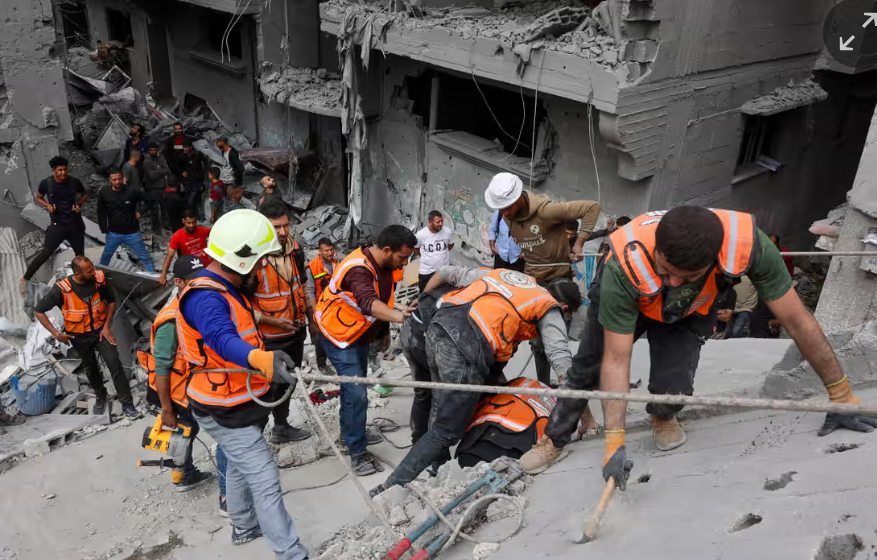
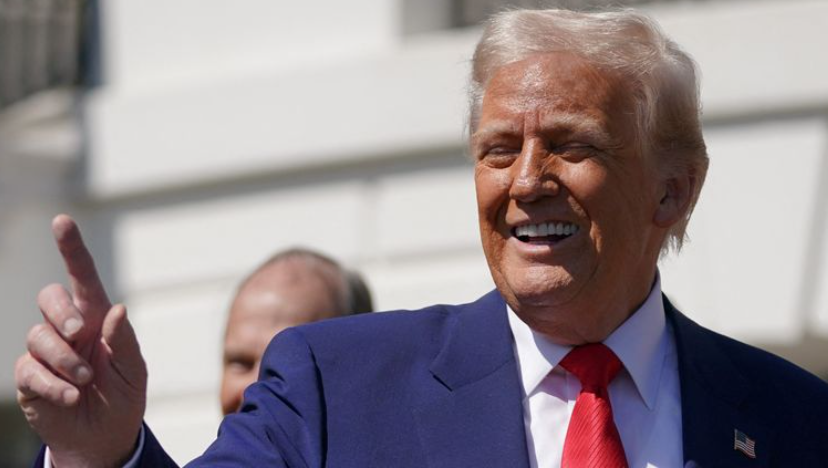

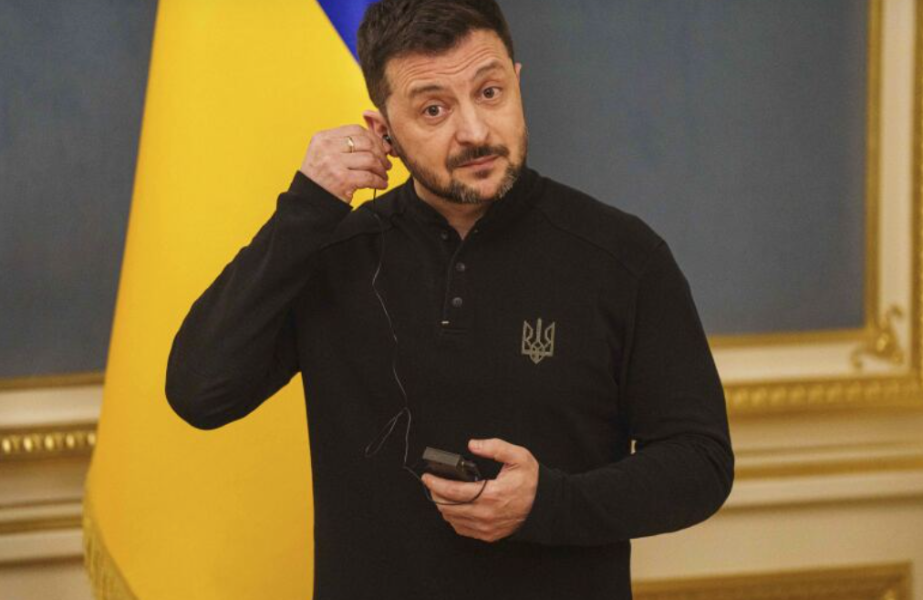
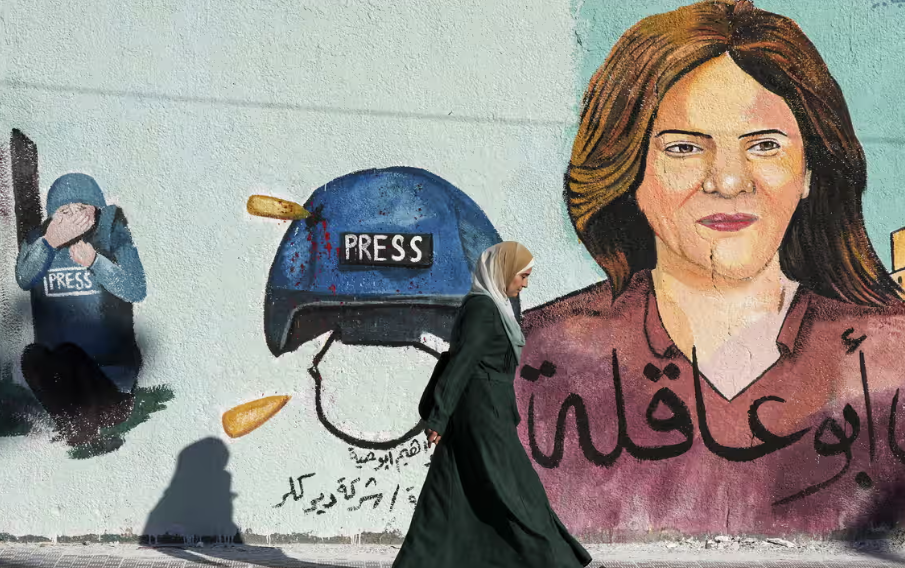
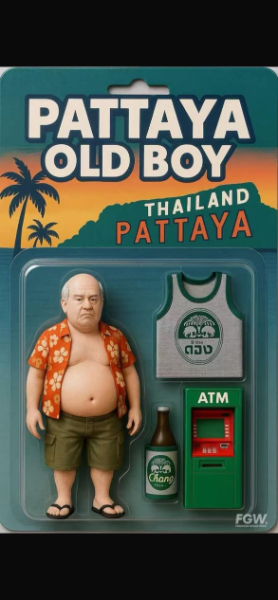





.webp.989d507a915714280c3e56041c5a123c.webp)
.webp.823427298678d3e1c7698ce2f6e24ca7.webp)
.webp.adc97c5d10c306539377661d1f130aff.webp)
.webp.80c7efb6cc725d35ed7b0a4bc22c8cc4.webp)